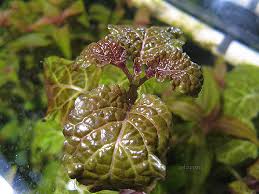Mushroom Hotpot with Tofu: A Delightful Vegetarian Experience

Mushroom hotpot with tofu, or “Lẩu nấm hương với đậu phụ” in Vietnamese, is a wholesome and comforting dish that offers a delicious balance of textures and flavors. A part of the hotpot tradition that is beloved in various Asian cuisines, this dish has gained popularity due to its light yet rich flavors and its ability to accommodate vegetarian and vegan diets. Whether you’re an avid mushroom lover or looking for a nourishing plant-based meal, mushroom hotpot with tofu is the perfect choice. In this article, we will explore the origins, ingredients, preparation methods, and cultural significance of this delightful dish, offering insights into how to make it at home.
The Origins and History of Mushroom Hotpot with Tofu
Hotpot is a traditional meal in many Asian cultures, and its origins can be traced back to ancient China. It was originally a dish where ingredients such as meat, vegetables, and mushrooms were cooked in a large pot of broth, enjoyed communally at the dining table. The concept of hotpot spread across many regions in Asia, evolving into different variations based on local ingredients, flavors, and cooking styles.
In Vietnamese cuisine, hotpot is an essential part of the food culture, often served during family gatherings, festive occasions, or as a hearty meal during the colder months. While meat-based hotpots are more common, vegetarian hotpots have been gaining recognition for their health benefits and the use of fresh, plant-based ingredients. Mushroom hotpot with tofu is a perfect example of a dish that highlights the earthy flavors of mushrooms combined with the creamy texture of tofu.
The inclusion of tofu in hotpot dishes is a practice that dates back thousands of years. Tofu, which originated in China, became a staple in many Southeast Asian cuisines due to its versatility and ability to absorb the flavors of the broth and other ingredients. When paired with mushrooms, which bring their own rich umami flavor, tofu enhances the depth of the hotpot without overwhelming it.
Mushroom hotpot with tofu is beloved not only for its taste but also for its health benefits. Mushrooms, particularly varieties like shiitake, enoki, and oyster mushrooms, are rich in antioxidants, vitamins, and minerals, while tofu is an excellent source of plant-based protein. This makes the dish a nutritious and balanced meal, ideal for those seeking lighter but filling options.
Key Ingredients in Mushroom Hotpot with Tofu
The beauty of mushroom hotpot with tofu lies in the simplicity of its ingredients. By focusing on fresh, high-quality vegetables and mushrooms, this dish highlights the natural flavors of the ingredients, creating a savory and satisfying meal. Here are the key ingredients you will need:
1. Mushrooms
Mushrooms are the star of this dish, providing both texture and flavor to the hotpot. Various types of mushrooms can be used, each contributing its unique characteristics:
- Shiitake Mushrooms: Known for their meaty texture and deep umami flavor, shiitake mushrooms are a popular choice for hotpot dishes. They add a rich, earthy taste to the broth.
- Oyster Mushrooms: These mushrooms have a delicate texture and a mild flavor. They cook quickly and absorb the flavors of the broth.
- Enoki Mushrooms: With their thin, delicate stems and mild flavor, enoki mushrooms add a slight crunch and lightness to the hotpot.
- King Oyster Mushrooms: These mushrooms have a hearty texture and a mild, slightly sweet flavor. They add substance to the dish and are great for soaking up the broth.
A combination of these mushrooms will provide a variety of textures, from tender and silky to firm and chewy, adding depth to the hotpot.
2. Tofu
Tofu is a key component of this vegetarian hotpot, offering a creamy texture and a neutral flavor that pairs beautifully with the savory broth. The tofu soaks up the flavors of the broth, becoming infused with the umami taste. There are two main types of tofu you can use:
- Firm Tofu: This tofu has a dense texture and holds its shape well in the hotpot. It is ideal for absorbing the broth and complementing the mushrooms.
- Silken Tofu: For a softer and smoother texture, silken tofu can be used. While it is more delicate, it still provides a subtle flavor and richness to the dish.
Both types of tofu work well in mushroom hotpot, depending on the texture you prefer.
3. Vegetables
Adding vegetables to the hotpot enhances its nutritional value and provides a refreshing contrast to the rich flavors of the mushrooms and tofu. Common vegetables included in mushroom hotpot with tofu are:
- Chinese Cabbage: Known for its mild flavor and tender leaves, Chinese cabbage is commonly added to the hotpot. It absorbs the broth and adds a delicate crunch.
- Spinach: Fresh spinach leaves are perfect for hotpot, as they wilt quickly in the hot broth, providing a mild bitterness that balances the richness of the tofu and mushrooms.
- Carrots: Thinly sliced carrots add color and sweetness to the dish. They also provide a crunchy texture that contrasts with the other ingredients.
- Baby Corn: Sweet and crunchy, baby corn complements the other vegetables in the hotpot, providing a pop of color and flavor.
4. Aromatic Herbs and Spices
The broth is essential to the success of any hotpot, and in this case, it should be light yet aromatic to enhance the flavors of the mushrooms and tofu. Common aromatics used in mushroom hotpot broth include:
- Ginger: Fresh ginger adds warmth and a subtle spiciness to the broth.
- Garlic: Minced garlic contributes a rich, savory flavor that enhances the overall taste of the broth.
- Lemongrass: This herb adds a citrusy note to the broth, bringing a refreshing flavor that complements the mushrooms and tofu.
5. Broth Base
The broth in mushroom hotpot with tofu is typically clear and light, allowing the natural flavors of the ingredients to shine. It is often made from a combination of:
- Vegetable Stock: A flavorful base made from simmering vegetables such as onions, carrots, and celery.
- Mushroom Stock: To enhance the earthy flavor of the hotpot, you can use mushroom stock, which is made by simmering dried mushrooms.
- Soy Sauce: For a savory, umami-rich flavor, a dash of soy sauce can be added to the broth.
- Salt and Pepper: To season the broth, a little salt and pepper are typically used, though it should remain subtle to allow the natural flavors of the ingredients to shine.
How to Make Mushroom Hotpot with Tofu at Home
Now that we’ve covered the essential ingredients, let’s explore how to prepare a delicious mushroom hotpot with tofu. Follow this recipe for an easy and satisfying meal:
Ingredients:
- 1 cup shiitake mushrooms, sliced
- 1 cup oyster mushrooms, sliced
- 1 cup enoki mushrooms, trimmed
- 1 block firm tofu, cut into cubes
- 1 cup Chinese cabbage, chopped
- 1 cup spinach leaves
- 1 carrot, thinly sliced
- 1/2 cup baby corn
- 1 onion, sliced
- 3-4 cloves garlic, minced
- 2-inch piece of ginger, sliced
- 1 stalk lemongrass, smashed
- 6 cups vegetable stock or mushroom stock
- 2 tbsp soy sauce
- Salt and pepper to taste
Instructions:
- Prepare the Broth:
- In a large pot, add the vegetable or mushroom stock along with the onion, garlic, ginger, and lemongrass. Bring to a boil, then reduce the heat to simmer. Let the broth simmer for 15–20 minutes to allow the flavors to develop. Season with soy sauce, salt, and pepper to taste.
- Prepare the Vegetables and Tofu:
- While the broth is simmering, prepare the vegetables and tofu. Slice the mushrooms, chop the Chinese cabbage, and slice the carrot and baby corn. Cut the tofu into cubes. Set all the ingredients aside.
- Set Up the Hotpot:
- Once the broth is ready, remove the lemongrass and strain out the aromatics. Transfer the broth to a hotpot or large pot that can be placed on the table for communal cooking.
- Arrange the prepared vegetables, tofu, and mushrooms around the hotpot so that guests can easily add their ingredients to the simmering broth.
- Cook the Hotpot:
- To cook, simply add the mushrooms, tofu, vegetables, and baby corn to the broth. Let the ingredients cook for a few minutes until they are tender. The tofu and mushrooms will absorb the broth’s flavors, while the vegetables will soften and add their own unique flavors to the pot.
- The hotpot can be served with a side of steamed rice or noodles to complete the meal.
- Serve and Enjoy:
- Once the ingredients are cooked, enjoy the hotpot by dipping them into the flavorful broth. Serve with dipping sauces like soy sauce, sesame oil, or chili sauce for added flavor.
Conclusion
Mushroom hotpot with tofu is a comforting, nutritious, and flavorful dish that is perfect for anyone seeking a healthy, plant-based meal. The combination of earthy mushrooms, creamy tofu, and fresh vegetables creates a satisfying and balanced meal, while the light yet aromatic broth ties everything together. Whether you’re cooking for a special occasion or a casual dinner, this dish is sure to impress your guests with its depth of flavor and its ability to bring people together around the table. By following the steps outlined in this article, you can easily recreate this delightful dish at home and enjoy the rich, comforting flavors of mushroom hotpot with tofu.








